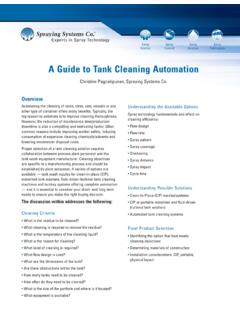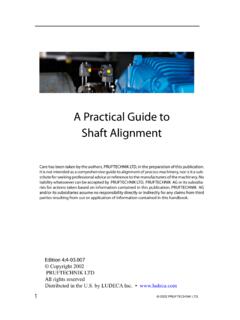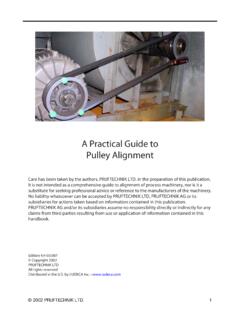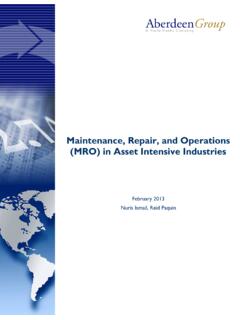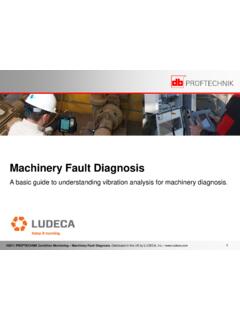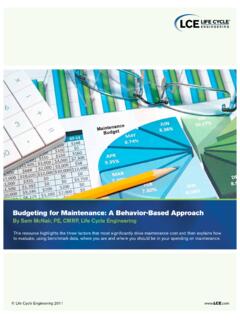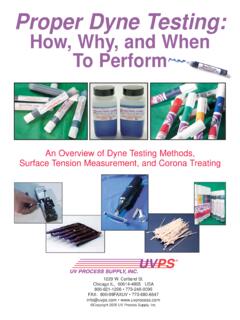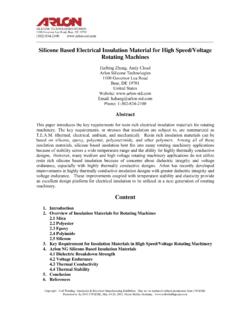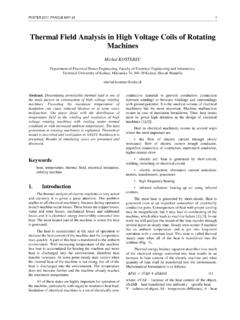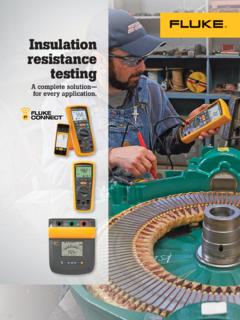Transcription of White Paper: Electrical Testing - Plant Services
1 Begin >Finding Electrical FailurE ModEs oF rotating MachinEry with Electrical Testing MEchanisMswhite paper < Previous Page White paper : Electrical Testing | Page 2 Next Page > Electrical maintenance professionals are expected to keep Plant operations mov-ing smoothly with an ever-decreasing budget and greater demands on their time and equipment. This dilemma creates a large and daunting task. In order to develop a compre-hensive reliability program a wide variety of re-quirements need to be met. A unified approach to meeting these needs is to identify the most common failure modes in Electrical equipment and then identify the tests that most effectively find those failures.
2 In accomplishing this task, the amount of reactive maintenance due to un-scheduled downtime is lessened. There is myriad equipment available to the maintenance professional for Electrical predic-tive and preventative maintenance. Vibration technology is a usual starting point for most programs; however, there is also lubrication analysis, infrared, ultrasonic, along with testers that supply specific results on the motor cir-cuit and insulation systems of electric motors. These testers include capabilities like torque and current signature analysis on the dynam-ic side of Testing and inductance, impedance, capacitance, phase angle, winding resistance, Megohm, DC High potential (HiPot) and surge on the static side of the purpose of this article, the focus of failure modes and appropriate Testing proce-dures will be for static Testing of electric motors.
3 These tests evaluate the integrity of the motor to run in the environment that it is installed. The instruments that perform these tests pro-vide both low voltage and high voltage Testing capabilities that look at different types of fail-ures in one instrument. Most of these tests are governed by IEEE standards. Failure Modes in Electric MotorsIEEE and EPRI have done independent studies focusing on failure modes in electric rotating machinery. Their conclusions state that over 40% of all motor failures are bearing related, over 25% are stator related, 8-9% are rotor re-lated and the remaining 14-22% are a combina-tion of other smaller failure modes are broken up into four motor aging categories: Thermal aging, Electrical aging, mechanical aging and environ-mental aging.
4 An effective reliability program will have the tools necessary to identify and prevent these causes prior to catastrophic mo-tor failure and unplanned downtime. For this paper , we will focus on Electrical aging faults and how they affect the insulation of the motor. Electrical AgingElectrical aging occurs when voltage across the insulation causes deterioration. This aging occurs several ways. Overheating is a major contributor to deterioration along with manu-facturing defects, winding ground faults, bro-ken rotor bars or short circuit end rings, elec-trical discharges, surface tracking and moisture absorption, system surge voltages, transient overvoltages in rotor windings, high resistance connections among others.
5 Voltage stress, , voltage overload, reduces insulation service life. Causes include: bus transfers, switching surges, reflected wave phenomena due to vari-able frequency drives or even volts per turn that was not properly calculated in the motor Under-excitation and over-excitation of core el-ements can cause excessive heat in the core EPRI StudyStator36%Rotor9%Other14%Bearing41%I EEE StudyRotor8%Bearing44%Other22%Stator26%< Previous Page White paper : Electrical Testing | Page 3 Next Page >laminate insulation . Higher temperatures re-duce the dielectric strength of the inter laminar insulation over time and causes other stresses due to expansion and relative motion.
6 Also cir-culating currents in the laminations can result in voltage being developed between adjacent core laminations. Even minor defects in the inter laminar insulation may provide paths for circulating currents causing further deteriora-tion. This heat then affects the coils, turn-to-turn and inter lamination insulation . A general rule of thumb: Every 10 rise in temperature cuts the insulation life in large volume of core behind the slot is more prone to overheating due to increased flux compared to the tooth area. This area has less ventilation causing higher temperatures particularly as the iron begins to saturate.
7 The increase in temperature creates a vicious cycle. Once the temperature is elevated, inter laminar breakdown of insulation increases, which gives rise to faults and eddy currents, which cause even higher temperatures to be produced. These higher temperatures cause mechanical stresses resulting in distortion and vibration. When combined, these effects eventually lead to fusing of laminations, melting of iron and core failure. [1] In addition to core faults, this increased temperature will also deteriorate the groundwall and turn-to-turn Defects of the Stator CoreLamination shorts can be introduced during manufacturing or refurbishment.
8 Poor adhe-sion between the insulation and steel causes flaking, which creates weakness. Poor edge deburring of the laminations will cause sharp edges that cut through the insulation and create metal-to-metal contact. In addition, the short-ing of the diameter of the stator bore caused by smearing of the insulation in transportation or installation or the overfilling of stator slots can damage the core. All of these occurrences can shorten the life of the motor and deteriorate the insulation . [1] Shorting of the laminations will also lessen the efficiency of the Ground Faults in Core Slots The energy and heat produced by stator wind-ing faults in the slot region are often high enough to melt and fuse the core lamina-tions at the slot surface.
9 If this core damage is not repaired when the failed coil or bar is replaced, the new coil might fail to ground because of the heat generated by the shorted laminations. [1]Stator Winding insulation : Electrical Discharges A winding fails when the dielectric strength of the insulation can no longer support the operating voltage or transient overvoltages seen during startup or shut down. Electrical discharges generally occur in windings with voltage ratings of 5 kV rms or above and are commonly known as Partial Discharge. This gas breakdown phenomenon occurs in gas-filled pockets, which have solid insulation boundar-ies.
10 A characteristic of partial discharge is that it requires a minimum voltage be met in order for a discharge to take place. The rate of de-terioration of insulating materials that occurs due to partial discharge is a function of their discharge resistance properties. The fewer the voids produced due to the manufacturing pro-cess, the more resistant the insulation is to par-tial discharge. Generally, organic materials are more susceptible to partial discharge then non-organic of aging due to partial discharge are evident of treeing through and burning of the groundwall insulation . This burning of the turn insulation occurs at its interface with the groundwall and is associated with turn-to-turn and strand-to-strand short circuits.
